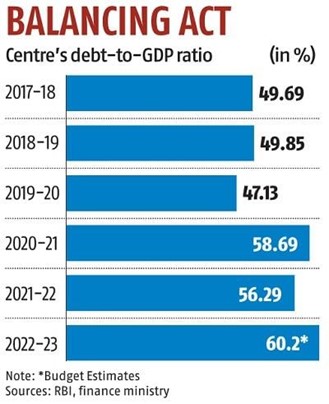PREVIOUS
India’s external debt - March 2022
September 7 , 2022
1217 days
1067
0
- According to the finance ministry, India's external debt increased by 8.2 percent year on year to USD 620.7 billion.
- 53.2 percent of it was denominated in US dollars.
- Indian rupee-denominated debt, estimated at 31.2 percent, was the second largest.
- External debt as a ratio to GDP was 19.9 per cent, while reserves to external debt ratio were 97.8 per cent.
- The long-term debt is totalled USD 499.1 billion, accounting for 80.4% of the total.
- While short-term debt is totalled USD 121.7 billion, accounting for 19.6% of the total.
- The sovereign debt increased by 17.1% year on year to USD 130.7 billion, owing primarily to the International Monetary Fund's (IMF) additional allocation of Special Drawing Rights (SDR) during 2021-22.
- Non-sovereign debt is increased by 6.1% to USD 490.0 billion as of end-March 2021.
- Commercial borrowings, NRI deposits, and short-term trade credit is accounting for up to 95.2 percent of the total.
- While NRI deposits fell by 2% to USD 139.0 billion, commercial borrowings at USD 209.71 billion and short-term trade credit at USD 117.4 billion increased by 5.7% and 20.5%, respectively.
- The debt service ratio fell significantly to 5.2 percent during 2021-22 from 8.2 percent the previous year, reflecting buoyant current receipts and moderating external debt service payments.

Leave a Reply
Your Comment is awaiting moderation.


